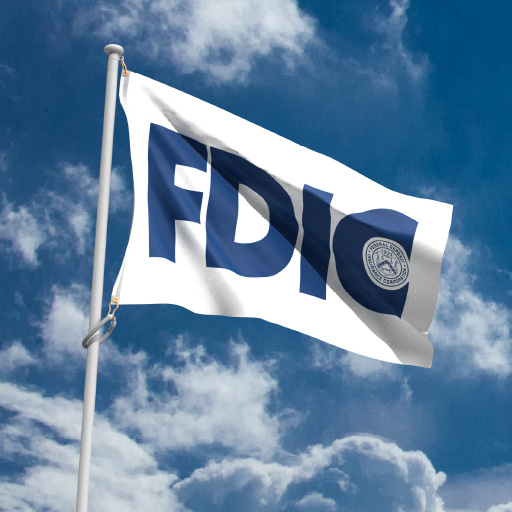
Trust is the hallmark of a successful banking system. Depositors, borrowers, investors, and the general public must trust that banks are sound in order for the system to work to their advantage. Today, the Federal Deposit Insurance Corporation [FDIC] forms the bedrock of trust in the American banking system, but this wasn’t always the case.
To appreciate the role of the FDIC today, it is first important to understand why it was established. This begins with studying the limitations of the banking system before the FDIC.
Early America Was Plagued by Bank Failures
In the early years of American history, funds held by banks were only guaranteed by the bank itself. Therefore, depositors lost their life savings when banks became insolvent. This system was untenable, and several banking crises clearly demonstrated the devastating effects of uninsured deposits.
- The Panic of 1819 – Increased wartime production during the War of 1812 and the Napoleonic Wars in Europe led to rapid economic expansion. Additionally, a push to settle the Western U.S. led to a boom in real estate speculation. Spurred by this economic success, banks lent beyond their capacity. Then, the Second Bank of the U.S. was created in 1816 to control the money supply but failed to do so. The Second Bank began tightening credit in 1818 and a rapid reduction in the money supply led to severe deflation, a recession, and many bank failures.
- The Panic of 1837 – The demise of the Second Bank of the U.S. led to unregulated lending practices. This speculative lending coupled with declining cotton prices, an influx of foreign capital, and a land price bubble led to another bout of economic turmoil and the collapse of 343 of 850 U.S. banks.
- The Panic of 1873 – Railroad speculation, the demonetization of silver, federal policies, overexpansion following the Civil War, and major fires in Chicago and Boston led to economic instability. Then, Jay Cooke & Company declared bankruptcy and a devastating string of bank failures coupled with severe economic turmoil ensued. This period was dubbed the “Long Depression” due to the length and depth of the crisis.
- The Panic of 1907 – Many Americans lost everything in a string of bank failures which began when two speculators – F. Augustus Heinze and Charles W. Morse – failed to corner the stock of United Copper. Americans became wary of banks tied to the two men and pulled their funds from those banks. The resulting bank run once again led to bank failures and devastating consequences for many Americans.
The early bank failures were caused by different economic and political factors, but they shared one common characteristic – once the turmoil began, Americans rushed to withdraw their funds from banks. Those periods were plagued by “bank runs” as individuals and businesses attempted to be first in line to take their money out of financial institutions they no longer trusted.
The Great Depression Spurred Congress to Act
Frequent episodes of banking turmoil in early American history led to some innovation in the banking industry to protect depositors. One example is a system formed by the New York Clearing House Committee to issue clearing-house loan certificates, a predecessor of today’s discount window. However, it took a near complete collapse of the U.S. economy to spur Congress to create a national system of deposit protection.
The Great Depression brought banking turmoil that impacted nearly every geographical area throughout the U.S., and it had devastating consequences. Over 9,000 banks failed throughout the 1930s – leading many Americans to lose faith in the banking system.
Bank failures during the Great Depression put the entire American economy and way of life in jeopardy. Fortunately, Congress created the FDIC on June 16, 1933, to safeguard deposits and rebuild trust in American banks.
The FDIC Restored Trust in The Banking System
With the FDIC in place, funds were protected by the full faith and credit of the United States government rather than being at the mercy of individual bank’s management. However, the FDIC originally insured only $2,500 per depositor – about $58,000 in today’s dollars. This was not enough, and the limit was quickly raised to $5,000 in July 1934. The limit has been raised several times since then and currently stands at $250,000 per ownership category at each insured bank.
With FDIC insurance, individuals and businesses can rest assured that their money is safe – but only up to the limit. Fortunately, there is a simple way for businesses to achieve extended FDIC protection.
Access Extended FDIC Protection With ADM
At the American Deposit Management Co. [ADM], we provide access for businesses to achieve full government protection from the FDIC or credit union equivalent, NCUA. We do this by spreading large cash reserves across our nationwide network of financial institutions so that each account is under the $250,000 limit.
In addition to extended government protection, our solutions allow businesses access to nationally competitive rates of return, liquidity to match their schedule, and easy reconciliations. We accomplish all of this with one account and one consolidated monthly statement.
To see how ADM can help your company achieve safety, liquidity, and returns, contact a member of our team today.
*American Deposit Management Co. is not an FDIC/NCUA-insured institution. FDIC/NCUA deposit coverage only protects against the failure of an FDIC/NCUA-insured depository institution.
